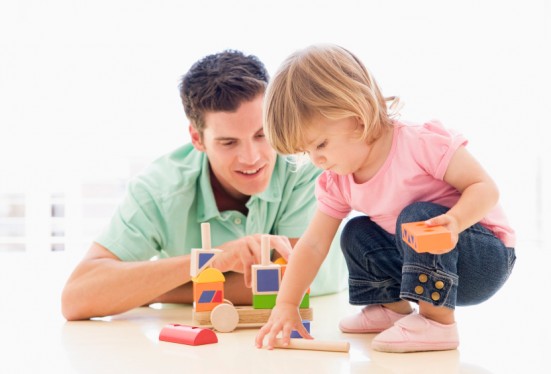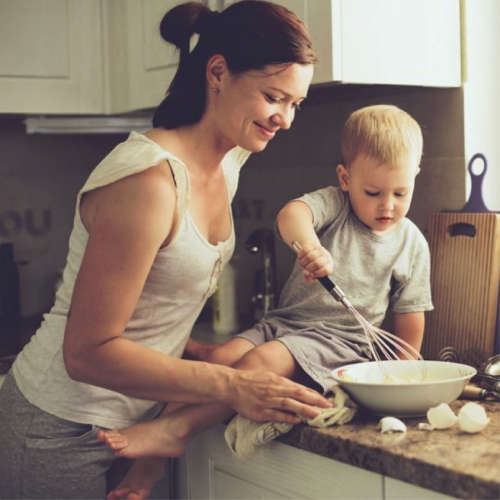
Early Language Stimulation
Speech Pathologists often talk about ‘Early Language Stimulation’ but what do we really mean?
Infants and toddlers generally develop communication skills in a reasonably predictable way:
Often parents are concerned that their child is not meeting these language milestones, and that they are ‘behind’ other children their age. It’s important that these communication milestones be taken as rough guidelines; children develop at different rates, and there is a wide scope of ‘normal’ when it comes to language development. Even so, many parents find it difficult not to worry about their child’s language development. This is where ‘Early Language Stimulation’ can be helpful.
Early Language Stimulation refers to a range of techniques that parents/carers can use to encourage their child to use language. Most of the techniques are fairly straightforward but you may need to practise them before they come naturally to you.
Imitation
Imitation is one of the earliest language stimulation techniques that you can start using with your infant. Your baby will develop simple actions before he develops sounds, so make sure you copy these actions at every opportunity.

As soon as your baby starts making noises (gurgling, squealing, cooing) you can start imitating them. By simply copying your baby’s sounds, you are teaching the basics of conversation skills- taking turns. Your baby is learning that he says something, and then you say something. You are also reinforcing your baby’s vocalisations. In other words, your baby will come to expect you to copy him when he makes a sound, and when you do copy him he will be happy about it. This simple reinforcement will encourage him to vocalise more and more. Soon your child will be imitating you, which is how he will begin to learn words.
Running commentary
Children learn language (words and sentences) through listening to others. The more language they are hearing, the more they are able to pick up new words and phrases. Often children have to hear a word many times before they will attempt to say it. This means that Mums and Dads need to do a lot of talking to encourage their children to learn new words. A simple way to do this is by providing a ‘running commentary’ throughout the day. In other words, describe all the things that your child is doing as they are doing them. Use simple language and repeat the main words. For example, if your child is engaging in pretend play with cups and spoons, your commentary might sound something like this:
“Pick up the cup, oops! Dropped it! Pick it up again. Big drink. Yum, yum, yum! Yummy drink! More drink please! Yum. Hmm, where’s the spoon? Here’s the spoon. Stir the drink. Stir, stir, stir. Big drink. Yummy drink! More please.”
Top tips:
If your child is extremely interested in banging the spoons rather than stirring, make sure your commentary focuses on this, for example:
“Bang, bang, bang! Bang the spoon. Very noisy! Wow! Banging the cup! Bang, bang, bang! Uh-oh, dropped the spoon. Come back here, spoon. Got you! Bang, bang! Bang more spoons. Lots of spoons. Very noisy!”
By commenting on your child’s immediate interests and actions, you are providing them with words and sounds that are motivating in that moment, and it is these words and sounds that they will be more likely to say.

You can use the running commentary technique from as early as 4 months of age. While your baby does not have any words yet, he is starting to develop an interest in the world, and is beginning to tune into your words and sounds. Help his language grow by incorporating this technique into your daily routine. As your child starts using single words, start to incorporate the next technique.
Labelling
When your child begins to use single words you will most likely hear a lot of labels (nouns) such as kitty, puppy, milk, ball. Right now these are the most useful words for your child as these are the things that he can see and touch. At this stage it is important for you to encourage your child’s vocabulary by labelling other things in your environment. Your child does not know all of the words yet, and may be simply pointing to different things and looking at you questioningly. When this happens, give your child the word.

As with the running commentary, it is important for you to focus on things that your child is already interested in. For example, if your child sees a cat and says ‘kitty’ you can begin to label other parts such as nose, feet, tail, whiskers, eyes, fur. Choose one new label to begin with, such as whiskers, and whenever your child points to a cat and says ‘kitty’, help him find the whiskers and say ‘whiskers’. Before long, your child will be labelling ‘whiskers’ independently.
This simple technique allows parents to build their child’s vocabulary by extending on their current interests.
Once your child is using lots of single words, progress to the next technique.
Note: if your child pronounces words incorrectly, it is important for you to repeat the word correctly. For example, if your child says ‘kikky’ instead of ‘kitty’, it is important that you show him the correct way to say that word e.g. “Yes, it’s a kitty’. Children learn language from their parents, and if you repeat his error (‘kikky’) you are teaching him that this is the right way to say that word.
Build on your child’s words
Once your child is using lots of single words (50+ words, around 18-24 months of age) it is time for you to start speaking in 2-3 word sentences. Children learn how to construct sentences from Mum and Dad, so why not simplify your language and show them exactly how to combine 2-3 words?
As with the previous techniques, start with your child’s interests . Take your child’s single word and add a bit more information. For example, if your child points to a cat and says ‘kitty’, you could respond with ‘Oh! White kitty. Kitty is sleeping.’ In this instance you have given your child a few more words that they can use to talk about the cat: a colour (white) and an action (sleeping). These words will be interesting to your child in this moment, because he has shown interest in the cat. You have also shown your child how to combine these words to make a short sentence.
It is a good idea for you to incorporate lots of different types of words when using this technique. In other words, don’t only use colour words or size words when building on your child’s single words. To follow on from the cat example, you could use labels (whiskers, claws, fur), size words (little, big, long), colour words (black, white, brown), action words (pat, jump, sleep, purr), emotive words (angry, happy), location words (in, off, under), texture words (furry, soft, wet), etc. By using a wide variety of word types you are encouraging your child’s development of sentences and vocabulary.
Once your child is a bit older and using 3+ word sentences, it is time for you to start demonstrating appropriate grammar and sentence structure. At this stage your child’s sentences contain mostly content and not a lot of grammar or joining words. For example, your child might say ‘no park, raining, cold’. To teach the appropriate sentence structure you could say ‘Yes, we can’t go to the park because it’s raining and cold. We would get wet.’ Try to stay one step ahead of your child, in terms of the language you are using.
Final thoughts
Above all else, it is so important that you simply spend time with your child. This may sound like a super obvious thing, however it is a point that needs to be emphasised. You don’t need to spend hours and hours doing structured play with your child; in fact it is just as important for you to involve your child in regular everyday activities such as cleaning up, doing laundry, gardening, and preparing food. If you can start to incorporate some of the above techniques into these daily activities, the task will not seem so daunting, and it won’t take up extra time.
I hope that this overview of ‘Early Language Stimulation’ has been useful. Remember, these techniques are appropriate for all children, regardless of language abilities. If your child has language skills that are a little delayed, then these tips are for you. If your child has amazing language skills, then these tips are for you!